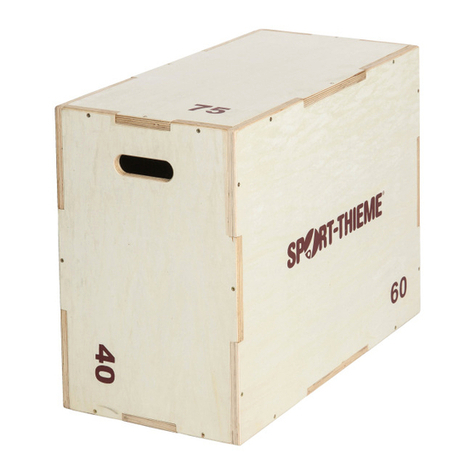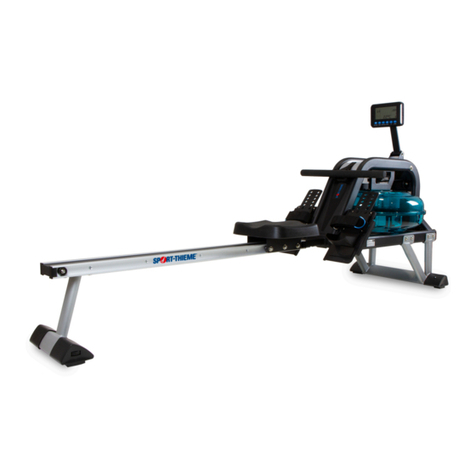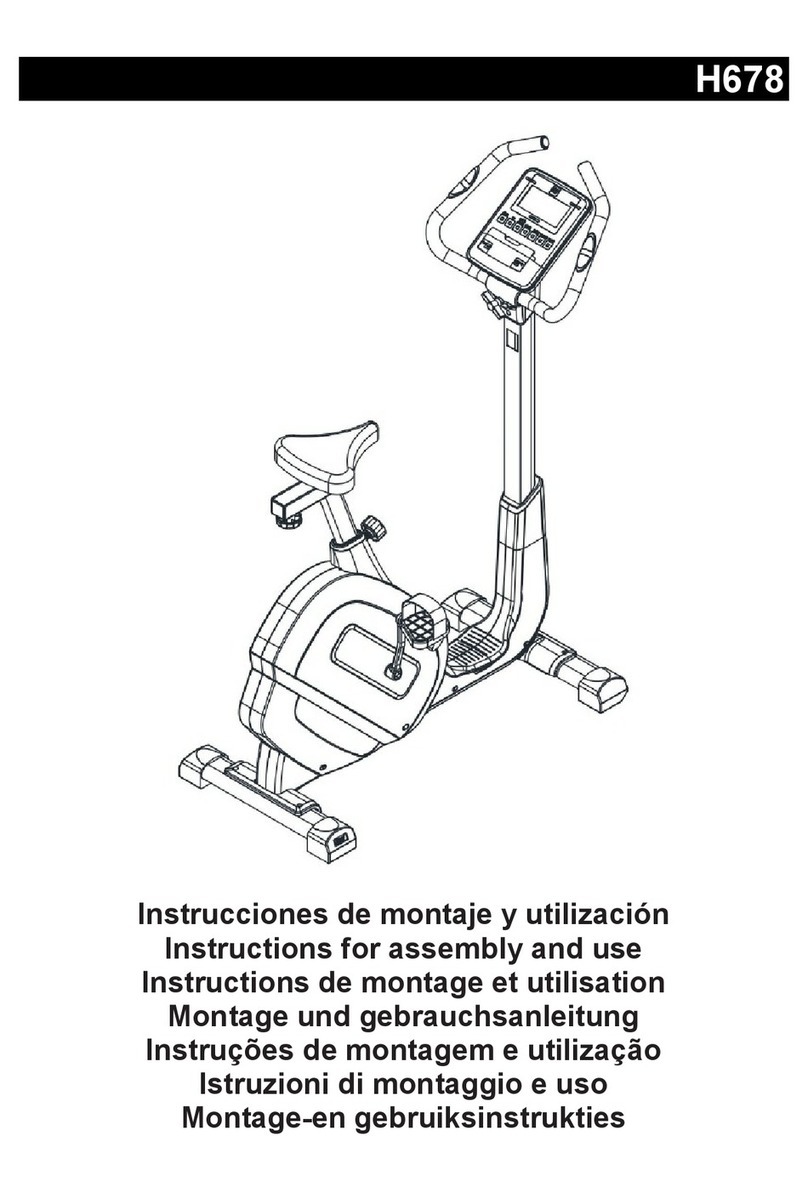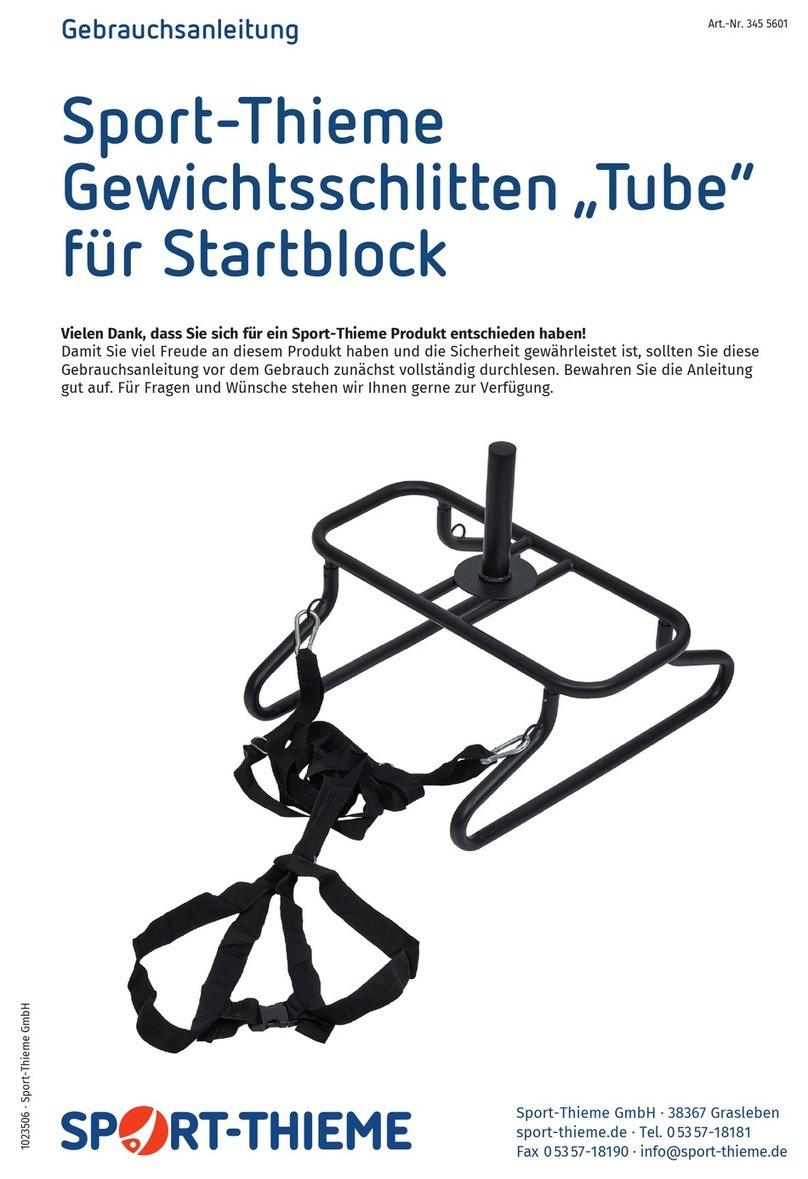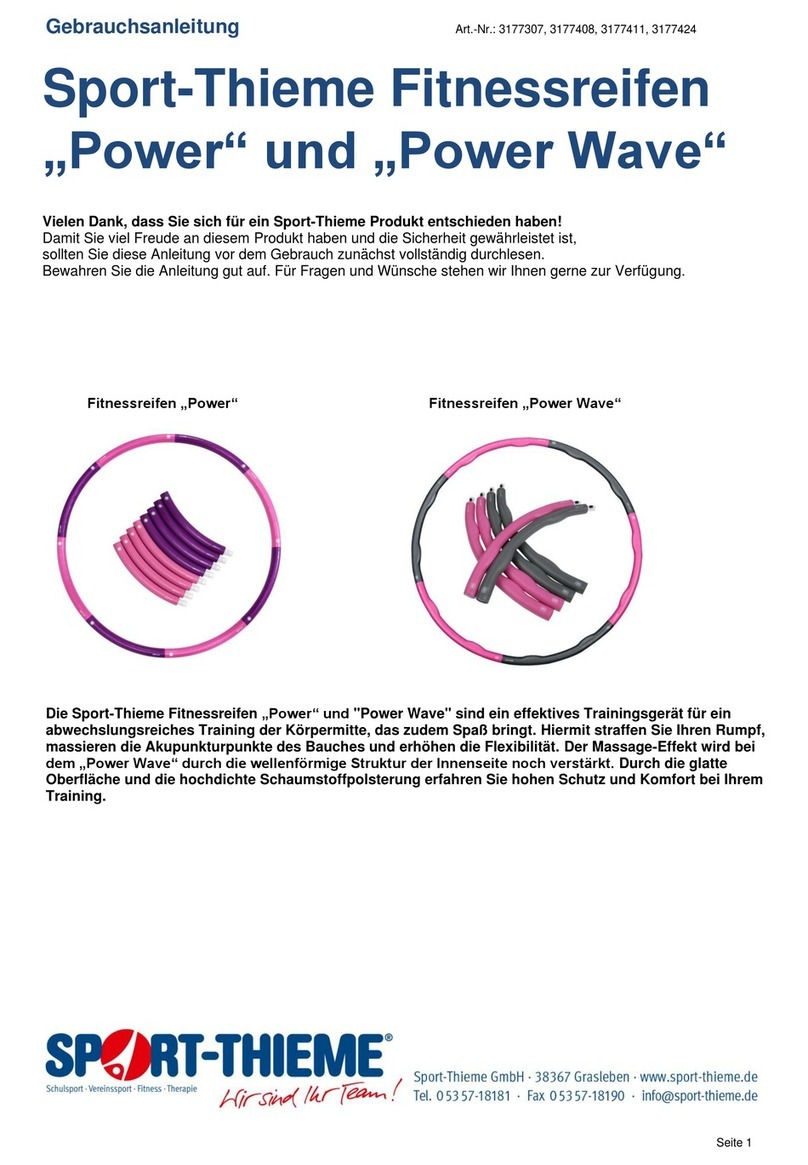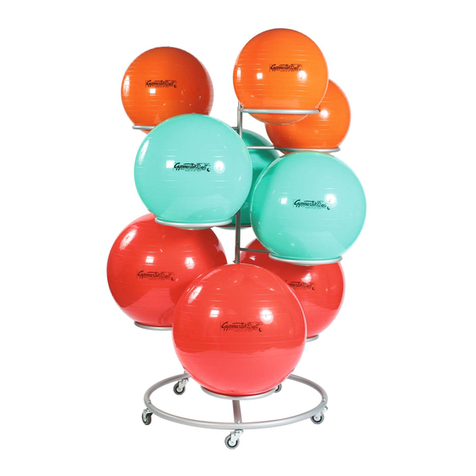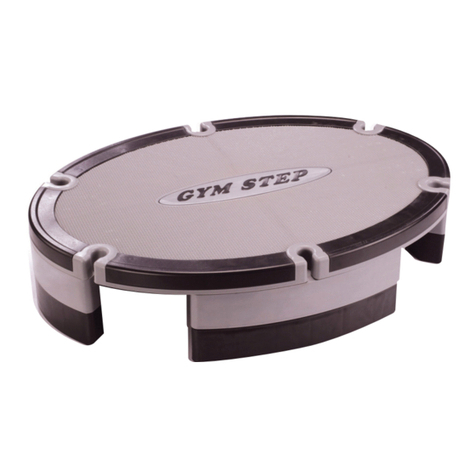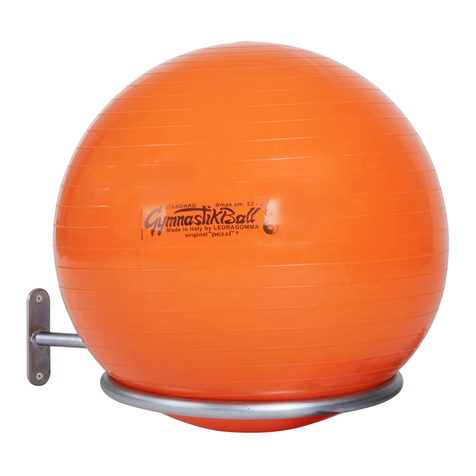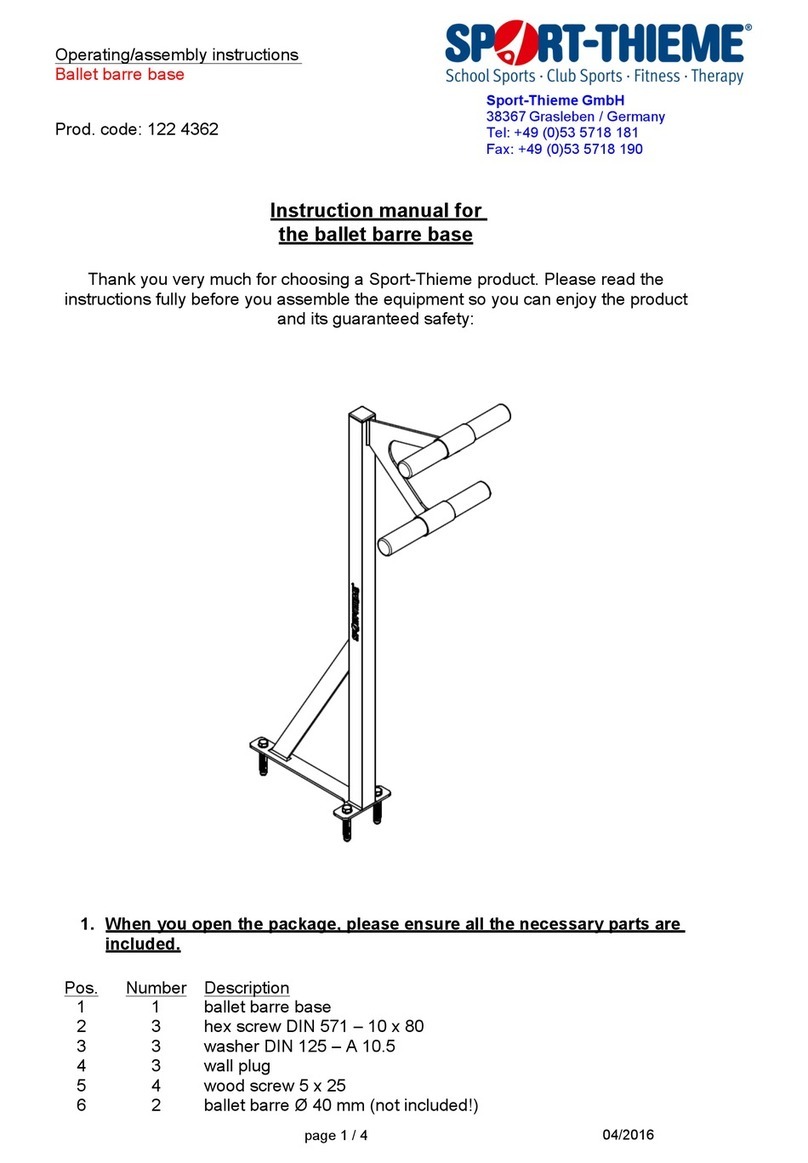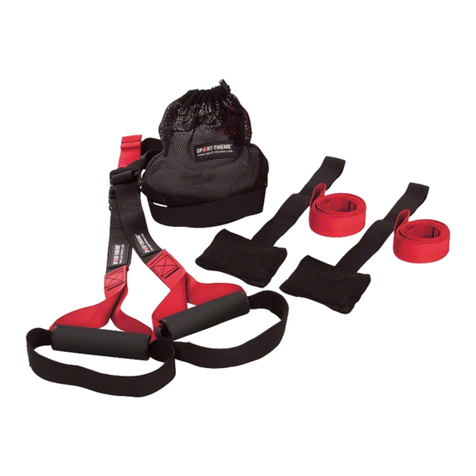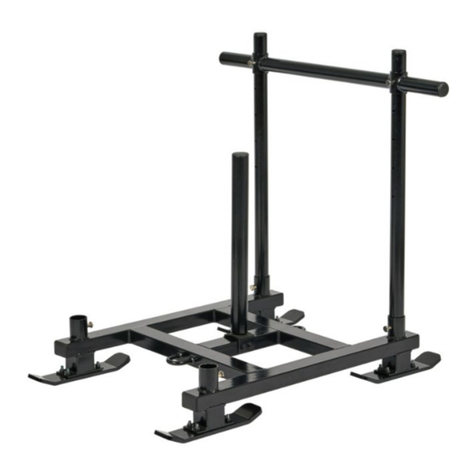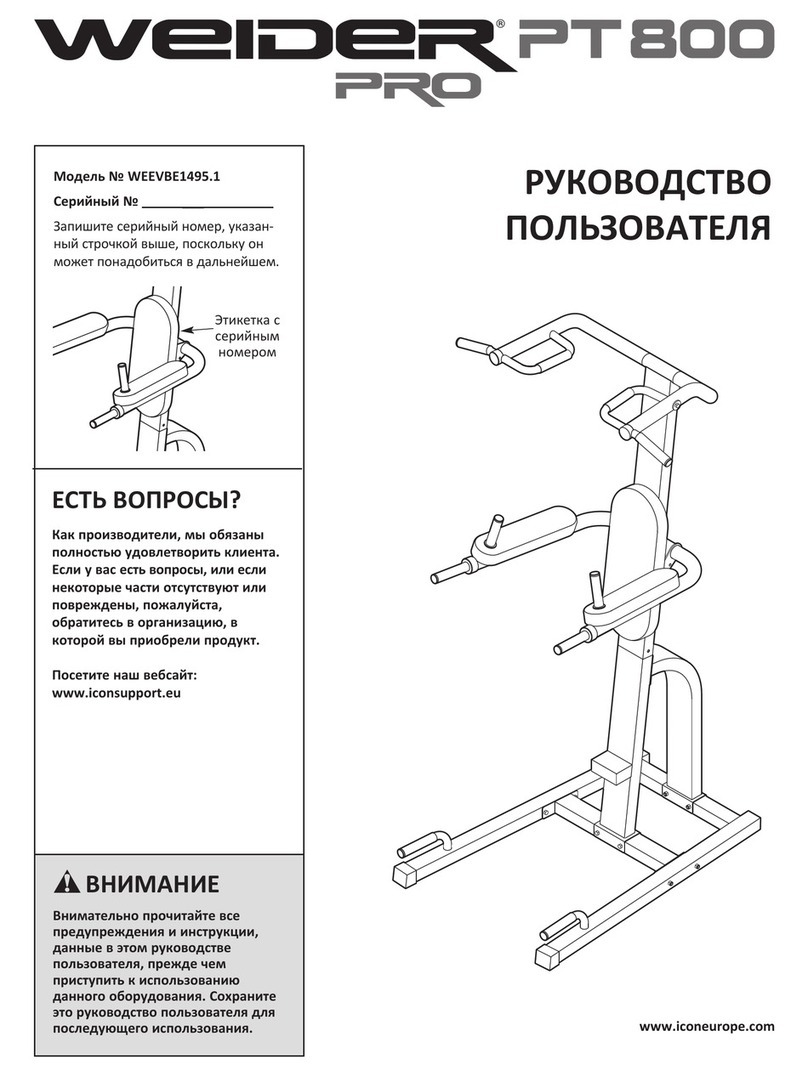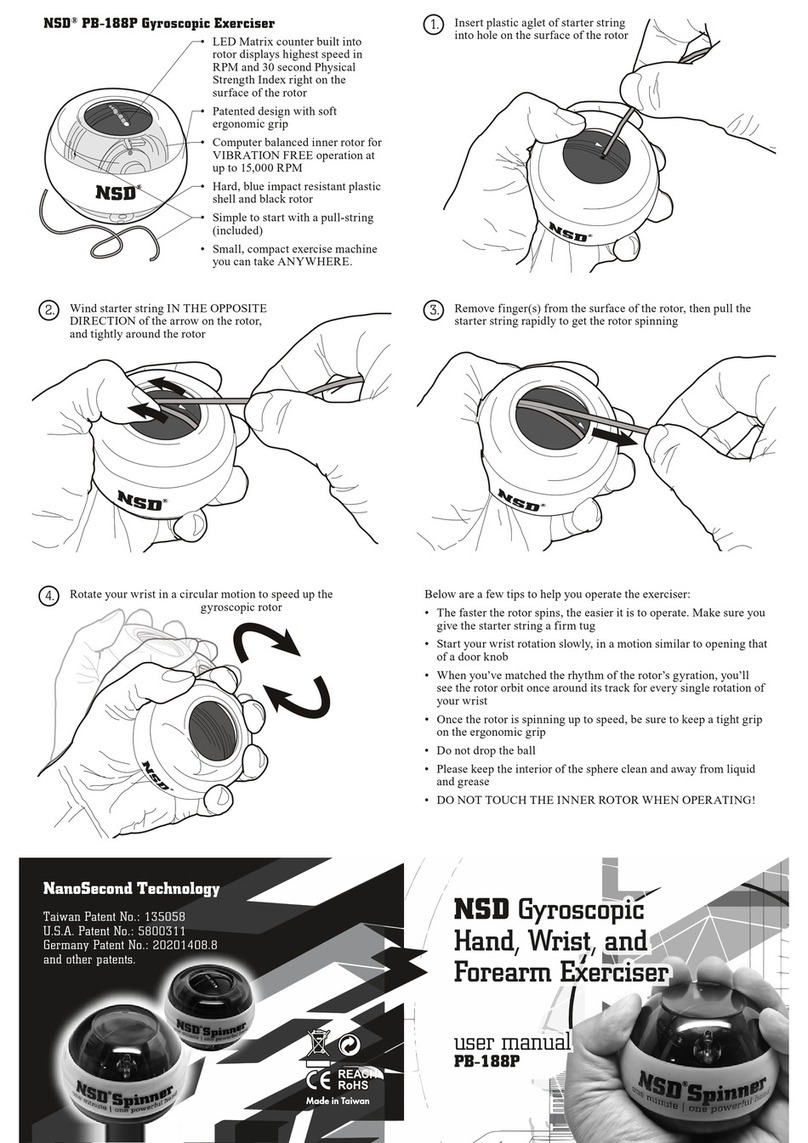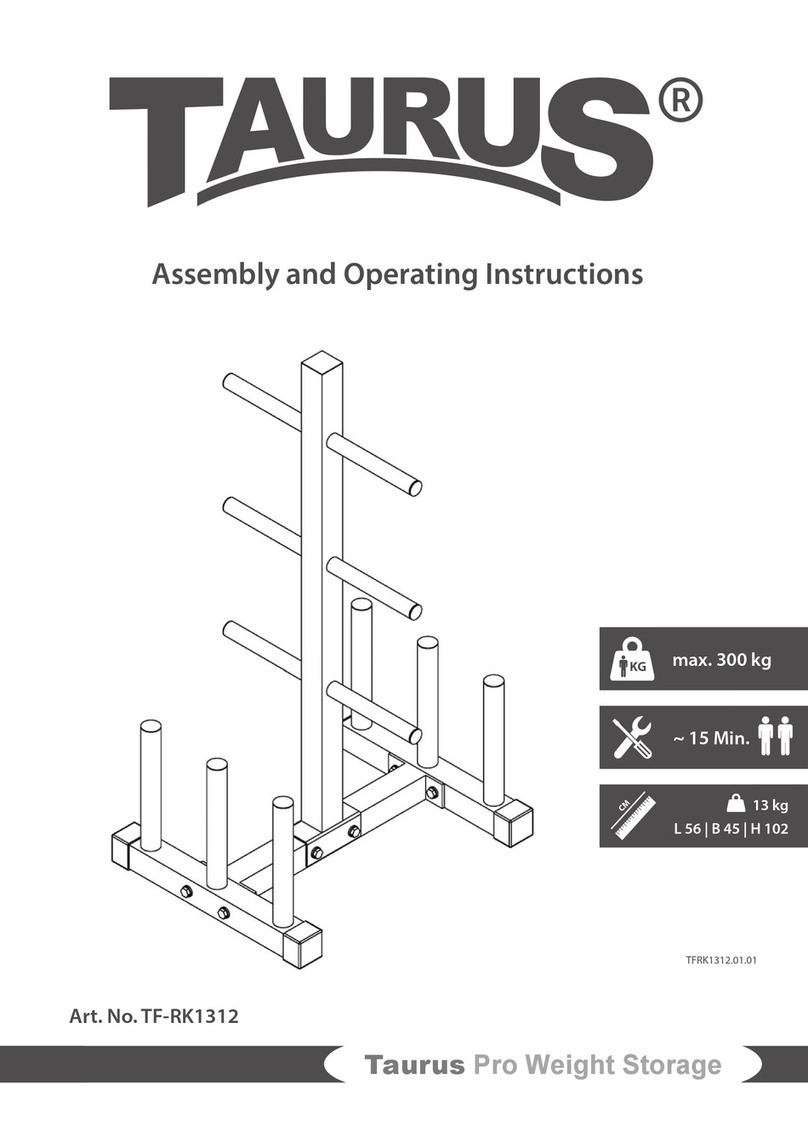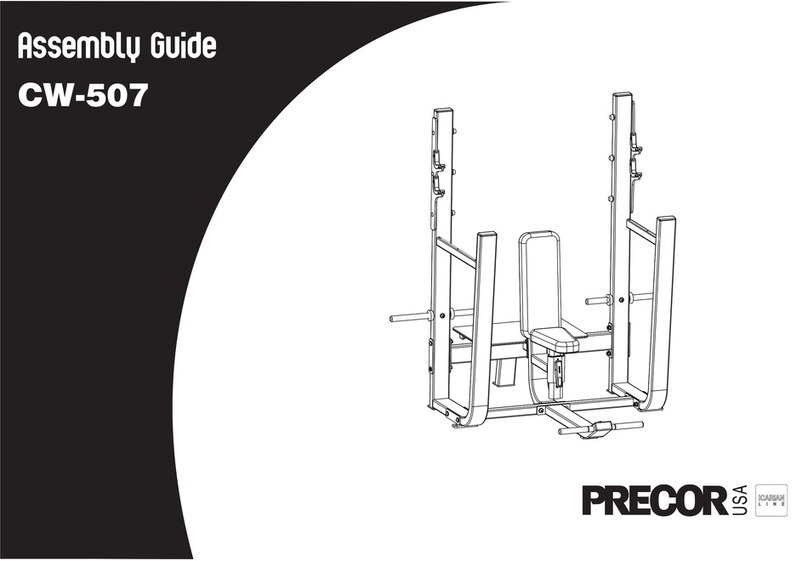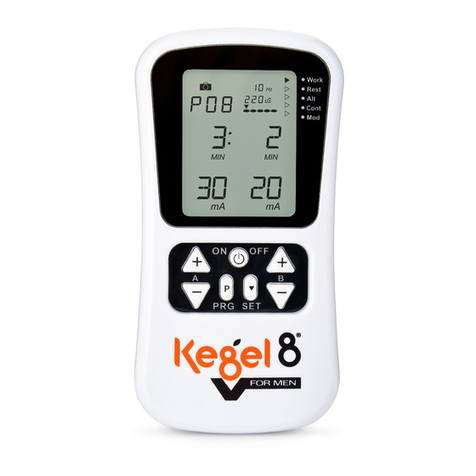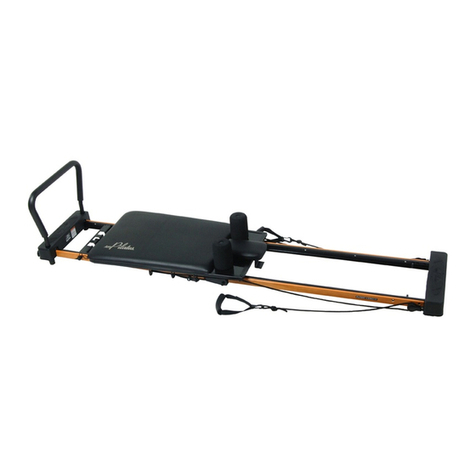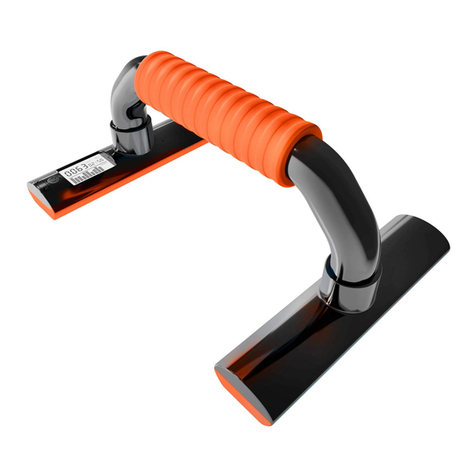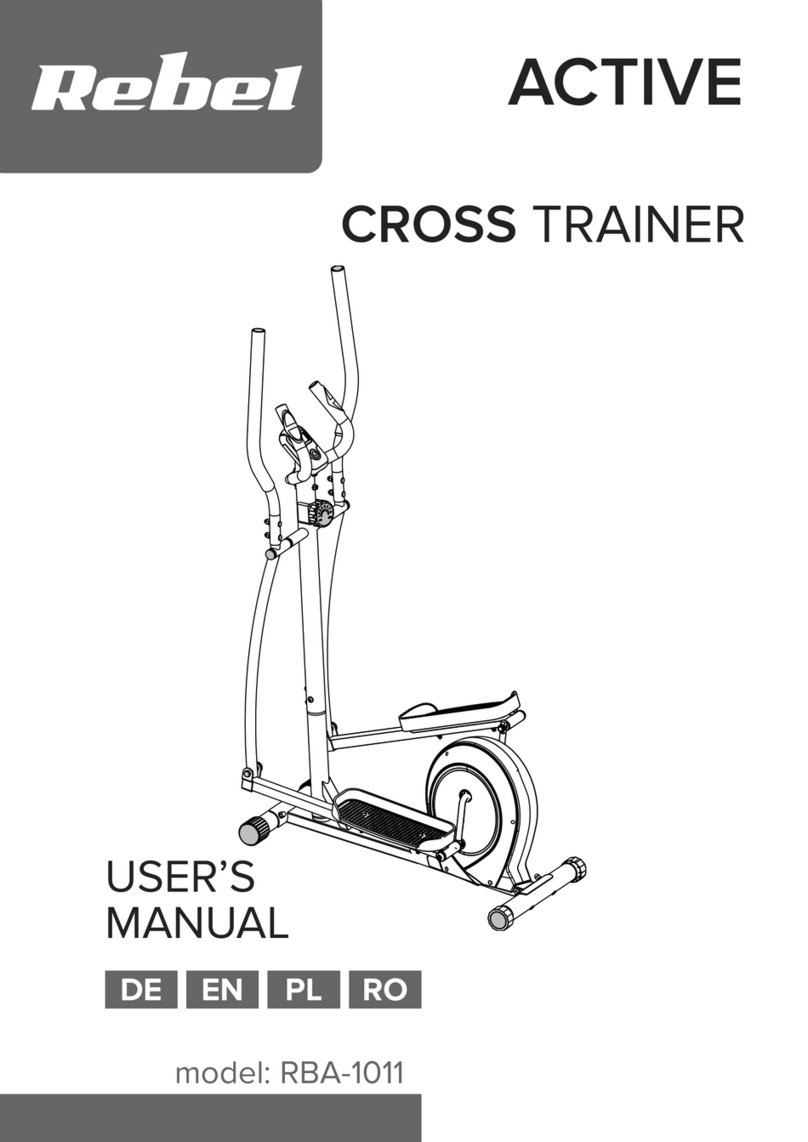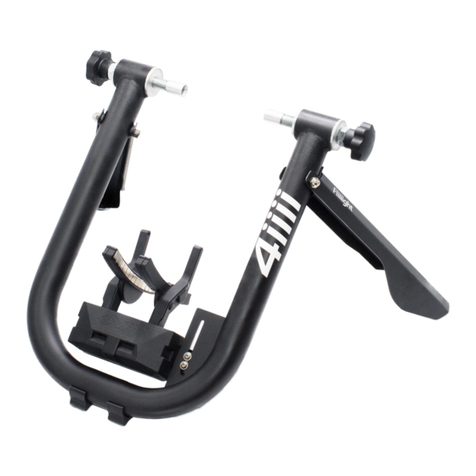
Schulsport · Vereinssport · Fitness · Therapie
4
Gebrauchsanleitung
zu Art.-Nr.
164 0003; 163 2008; 163 2011; 163 2024; 163 2037; 163 2040
233 7106; 235 4301; 235 4314; 235 4327
184 6108; 184 6111; 161 0505; 161 0518; 161 0521
233 7917; 233 7904
Hinweise
Alle Sport-Thieme Plyo Boxen sind für den Bereich Fitness konzipiert und nur bestimmungsgemäß zu ver-
wenden.
Eine Modikation jeglicher Art führt zur Beeinträchtigung der Sicherheit und zum Verlust der Gewährleistung.
Die Sport-Thieme So Plyo Boxen sollten nicht auf glatten Böden benutzt werden wie bspw. Holz, glatter
Beton oder Fliesen.
Hinweise zur regelmäßigen Kontrolle
• Führen Sie in regelmäßigen Abständen eine Sichtprüfung durch
• Aufgrund unserer kontinuierlichen Qualitätsprüfung der Produkte können sich technische Änderungen ergeben, die zu gering-
fügigen Abweichungen in der Anleitung führen
• Kontrollieren Sie regelmäßig die Schraubverbindungen auf ihren festen Sitz
• Prüfen Sie das Gerät auf eventuelle Beschädigungen und tauschen Sie verschlissene Teile aus
Allgemeine Hinweise zum Training
• Lassen Sie sich vor Trainingsbeginn zur Sicherheit von einem Arzt untersuchen, insbesondere bei Vorerkrankungen wie bei-
spielsweise Diabetes, Wirbelsäulenbeschwerden oder Herzproblemen, aber auch wenn Sie Trainingseinsteiger sind oder über
einen längeren Zeitraum sportlich nicht aktiv waren.
• Es wird empfohlen sich vor jeder Trainingseinheit aufzuwärmen, um den Körper auf die bevorstehende Belastung vorzube-
reiten und so Verletzungen der Muskeln und Sehnen vorzubeugen. Achten Sie darauf, dass Sie die Übungen korrekt aus-
führen. Jede Übung wird in der Regel langsam und kontrolliert durchgeführt. Atmen Sie stets gleichmäßig und halten Sie nie-
mals die Luft an. Bei der Anstrengung atmen Sie aus, während Sie nach der Anstrengung einatmen.
• Bei den folgenden Übungen handelt es sich um eine nicht abschließende Aufzählung. Vielmehr sind diese Übungen eine Aus-
wahl aus vielen verschiedenen Übungsformen und Variationen.
• Die Intensität und Komplexität des Trainings sollte Ihrem Leistungsniveau entsprechen. Lassen Sie sich im Zweifel durch
geschultes und ausgebildetes Fachpersonal bspw. in einem Fitnessstudio in Ihrer Nähe beraten.
• Die Anzahl der Sätze und Wiederholungen ist abhängig von Ihrem persönlichen Trainingsziel und Ihrem Leistungsniveau. All-
gemein dienen pro Übung Sätze mit jeweils - sauberen Wiederholungen als Anhaltspunkt. Denken Sie daran auch aus-
reichend Zeit für die Regeneration einzuplanen. Für einen optimalen und auf Ihre individuellen Bedürfnisse ausgerichteten
Trainingsplan, ziehen Sie bitte ebenfalls ausgebildetes und geschultes Fachpersonal zu Rate.
• Stoppen Sie bei Schmerzen unverzüglich das Training. Reduzieren Sie ggf. Gewicht, Hebel, Widerstand, Schwierigkeit und/
oder Anzahl der Übungen und stellen Sie eine korrekte Ausführung sicher. Konsultieren Sie einen Arzt oder eine Ärztin bei
wiederholt auftretenden Schmerzen.
